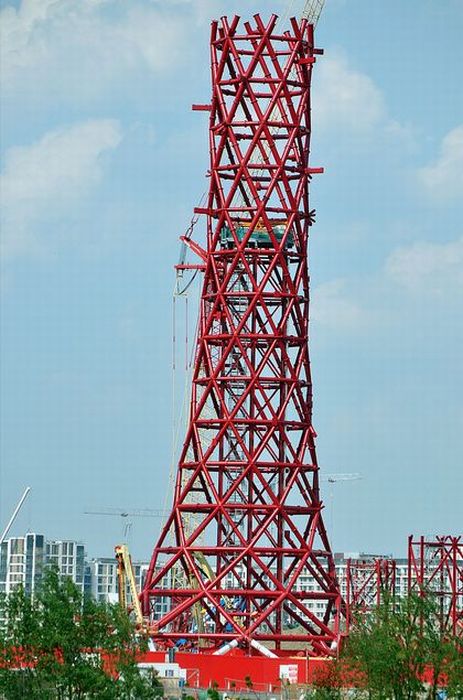|
|
ArcelorMittal Orbit, Olympic Park In Stratford, London
|
Reception
When plans were first reported for an Olympic tower, the media pointed to a previous manifesto pledge of Johnson's to crack down on tall buildings, in order to preserve London's "precious" skyline. The Times criticised the idea as a vanity project of Johnson's, with a design "matching his bravado", built to "seal his legacy", surmising it would be compared to other similar vanity projects such as Benito Mussolini's "wedding cake", the Monument to Vittorio Emanuele II built in Rome, or the Neutrality Arch, a rotating golden statue erected by Turkmenistan's President Saparmurat Niyazov, while comparing Johnson to Ozymandias. Art critic Brian Sewell said "Our country is littered with public art of absolutely no merit. We are entering a new period of fascist gigantism. These are monuments to egos and you couldn't find a more monumental ego than Boris."
Richard Morrison of The Times described Orbit as "like an enormous wire-mesh fence that has got hopelessly snagged round the bell of a giant french horn", adding that it "seems like an awful lot of trouble just to look at East London", in comparison to a music hall comedian's refrain at the $16 million cost of the Brooklyn Bridge. Morrison not only compared Johnson not only to Ozymandias, but the 20th century dictators Adolf Hitler, Joseph Stalin and Nicolae Ceauşescu, in their acts of "phallic politics" in building grandiose monuments. Criticising the lack of public involvement, he described how it would be an "undesired intrusion by the few into the consciousness of the many". He feared that it could become one of the many "thousands of naff eyesores" of recent public art in Britain, citing the embracing couple at St Pancras station (The Meeting Place), the Dockland's Traffic Light tree, and the proposed Rotherhithe Tunnel 'match-stick man' tribute to Isambard Kingdom Brunel, as London based examples.
Jay Merrick of The Independent said of Orbit that "its sculptural power lies in its ability to suggest an unfinished form in the process of becoming something else", describing how its artistic riskiness elevated it above the banal artworks of the public art movement that have been built elsewhere in Britain's towns and cities. Merrick was of the opinion that it would be either loved or hated, being a design which is "beautifully fractious, and not quite knowable".
|
|









